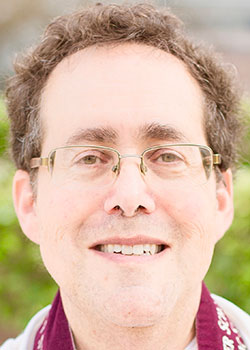One of the most famous of ancient Israel’s symbols of God’s presence is the bush that was aflame yet would not be consumed. That startling image has been taken both as a representation of a living faith and of the unquenchable spirit of the Jewish people. The burning bush has become the logo for countless Jewish institutions (such as the Jewish Theological Seminary, for example) and adorns innumerable Torah mantles in synagogues all over the world.
No less striking a biblical symbol is the pillar that led the Israelites through the wilderness. As the Torah explains: “On the day that the Mishkan (Tabernacle) was set up, the cloud covered the Tabernacle, the Tent of the Pact; and in the evening it rested over the Tabernacle in the likeness of fire until morning.” Every evening, the fire would settle down, showing the Israelites where to pitch their camp, and in the morning, the cloud would move forward, pointing the way the Israelites were to proceed.
The Torah points out that this miraculous fire/cloud was the very locus of God’s presence—the voice of Adonai spoke from amidst this flaming smoke, and it was this combination of fire and cloud that was a permanent sign that God was the ultimate leader of the Israelites tribes throughout their wandering. According to the Biblical scholar, Jacob Milgrom, this fire was in the center of the cloud, and became visible in the dark or when God wanted to summon Moses to a special audience. The fire was known as God’s kavod, God’s glory. It appeared to only three of Israel’s leaders—to Moses, to Aaron, and to Samuel—conferring a high level of distinction on each of them.
This perplexing symbol, unlike the burning bush, doesn’t adorn any Torah mantles, and hasn’t been adopted by any Jewish organization as its sign to the world. Perhaps because it seems more flamboyant, it rarely made its way into graphic representation. Yet the Midrash is filled with references to it that give it a post-biblical life that is quite illuminating in its own right.
• The Mekhilta points out that God’s kavod played a special role in defeating the Egyptian soldiers when the Israelites were escaping to freedom: the fire made the ground so hot that the chariots stuck in the melting mud, trapping the cruel soldiers so the slaves could make it to freedom.
• The Midrash Kaneh states that the cloud performed an additional miracle, containing two Hebrew letters: “Yud” and “Heh”. Those two letters spell one of God’s names, the name through which God created the world. Those letters would point the Israelites in the proper direction each morning, assuring that their march toward the Promised Land would succeed as God had planned.
• Melekhet ha-Mishkan notes that the Cloud would proceed when and where God wanted it to, but as a courtesy to Moses, it would stop in front of him and await his actual instruction to depart or to return. Moses would shout “Kuma Adonai (Arise, God!)” and “Shuva Adonai (Return, God!)” and the cloud would respond to his words. We use those same words in our Shabbat Torah service in the synagogue.
• According to the Midrash Yalkut, the radiance of the Cloud and Fire was a brilliant purple, which shone like the sun and the stars. Heathens who saw it from a distance were frightened of the Israelites and were also moved to praise God for this newest miracle. The Midrash also points out that the miraculous robes the Israelites were given by the angels were made in that same beautiful purple, so that they shone like God’s kavod as they paraded through the desert.
• The Midrash Sifre notes that it was the Kavod, the fire and cloud that waited while Miriam was recovering from her bout of Tzara’at, that forced the Israelites to wait for her too. Thus, the Cloud of Glory lent special dignity to this worthy Prophet in the sight of the Israelites in the camp.
By adding these fanciful details to the raw majesty of the Torah’s portrayal of the Pillar of Cloud and Fire, the Midrash connects the Pillar to the Creation of the world (through the link of God’s name), to the miracle of Yetziyat Mitzrayim (the Exodus, through grounding the Pharaoh’s chariots), to the authority of Moses (hence of the entire Torah and the Revelation at Mt. Sinai).
Thus all the major strands of Torah theology—the marvel of God’s Creation, the passion of God’s liberation, and the gift of God’s revelation—are combined in this wonderful symbol: a pillar of cloud and of fire.
In a place where words cannot go, our path is illumined for us by the radiant light of God’s Kavod.
Shine on.
Shabbat Shalom.

